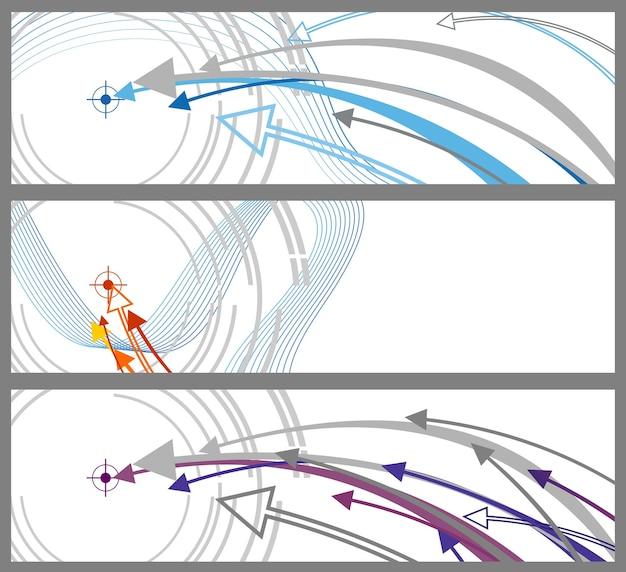If you’re a car enthusiast or someone who loves the world of aviation, then you may have come across a mysterious term called the NACA duct. But what exactly is a NACA duct, and how does it contribute to the realm of aerodynamics? In this blog post, we’re going to delve into the world of NACA ducts, understanding their purpose, effectiveness, and the difference between a scoop and a NACA inlet. So buckle up, and let’s embark on an exciting journey to discover the secrets behind this fascinating invention.
The NACA Duct: A Cool Innovation for High-Performance Vehicles
If you’ve ever wondered how Formula 1 cars or high-performance vehicles manage to keep their cool under pressure, you can thank the brilliant minds behind the NACA duct. This nifty little invention has revolutionized the world of aerodynamics and engine cooling, allowing cars to reach new heights of performance without overheating in the process. Let’s dig deep into the mechanics and marvels of the famous NACA duct!
The NACA Duct: An Invention That Lifted the Performance Bars!
The Birth of an Aeronautical Legend
Back in the day, the National Advisory Committee for Aeronautics (NACA) was on a mission to design aircraft that shook the very foundations of aviation. One of their many brilliant inventions was the NACA duct, named after the committee itself. This engineering marvel first took to the skies in the 1940s, ensuring proper airflow for aircraft engines.
But What Is a NACA Duct, Anyway?
Imagine a smartly designed, streamlined opening on the surface of a vehicle, like a small, purpose-built vent. Unlike regular air intakes, the NACA duct features a carefully designed curved shape, allowing air to smoothly flow into the vehicle without causing any drag. Think of it as a gentle kiss from the wind, keeping things cool under the hood without compromising on speed or efficiency.
So, How Does the NACA Duct Work Its Magic
Let’s Get Technical, Shall We?
Now, don your imaginary lab coat as we dive into the technical brilliance of the NACA duct. By utilizing the Coanda effect, this artful contraption pulls ambient air into its specially designed channel, directing it towards the engine or other heat-emitting components responsible for high-performance exploits. This clever engineering ensures optimal cooling efficiency without impacting the vehicle’s overall aerodynamics or speed.
One Cool Channel, More Than One Purpose
You might be wondering what makes the NACA duct so popular among performance car enthusiasts. Well, besides keeping engines chill, this versatile beauty also finds its purpose in brake cooling. Used strategically, it can divert air towards the brakes, preventing them from overheating during intense driving scenarios. Talk about multitasking genius!
NACA Duct: A Must-Have for Speed Junkies and Auto Aficionados!
From Racetracks to Everyday Roads
While the NACA duct is an iconic feature of motorsports vehicles, its influence has seeped into the mainstream automotive industry. From sleek street cars to off-road beasts, vehicle designers and engineers have embraced the NACA duct’s functionality and aesthetic appeal. Now, even your everyday commuter can benefit from the cooling prowess of this ingenious invention.
The “Cool” Factor
Apart from its practical use, the NACA duct adds a touch of visual flair to any vehicle. With its clean lines and structured design, it exudes a sense of purpose and speed. It’s like having a functional piece of art that screams, “I mean business, and I look awesome doing it!” So, whether you’re chasing checkered flags or just turning heads on the highway, the NACA duct has got you covered in both performance and style.
With its ability to enhance both performance and aesthetics, the NACA duct has undoubtedly left an indelible mark on the automotive world. From the adrenaline-fueled racetracks to the daily commute, this brilliant piece of engineering has proven itself time and time again. So, the next time you rev your engine and feel that cool breeze under the hood, take a moment to appreciate the genius of the NACA duct. It’s the unsung hero that keeps high-performance vehicles running smoothly while adding that extra touch of coolness.
What Does a NACA Duct Do
If you’ve ever marveled at the sleek design of a race car or wondered why certain aircraft have small openings on their surfaces, you may have encountered a nifty little invention called the NACA duct. But what exactly does a NACA duct do, you ask? Well, let me enlighten you!
The NACA Duct: A Breath of Fresh Air
1. Creating a Ventilation Powerhouse
The NACA duct, named after the National Advisory Committee for Aeronautics (NACA), is not your average run-of-the-mill duct. No, sir! This innovative device is designed to channel air to where it’s needed most. Whether it’s cooling down a high-performance engine or providing much-needed airflow to a cockpit, these ducts are the unsung heroes of aerodynamics.
Functionality behind the Design
2. Orifices that Outsmart the Wind
How do NACA ducts work their magic, you might wonder? Well, hold onto your hats, because I’m about to blow your mind (pun intended)! These ingenious devices are strategically designed with curved walls and carefully calculated dimensions. This allows them to “suck” air into the system using the magic of Bernoulli’s principle.
3. Embracing Bernoulli’s Mighty Principle
Okay, let’s not get too technical here, but I promise you won’t need a Ph.D. in physics to follow along. Bernoulli’s principle states that as the speed of a fluid (in our case, air) increases, its pressure decreases. So, when air flows over the curved walls of a NACA duct, it speeds up and creates a lower-pressure area inside the duct itself, effectively drawing air into the system.
Applications in the World of Speed
4. Keeping It Cool, Cool, Cool
One of the most common uses of NACA ducts is to cool down engines in high-performance vehicles. Whether it’s a race car tearing up the track or an aircraft soaring through the sky, these heat-generating powerhouses need sufficient airflow to keep their cool. The NACA ducts allow air to be sucked in, circulating it around the engine to prevent overheating and ensuring optimum performance.
5. Breathing Life into Cockpits and Cabins
But hey, it’s not just engines that benefit from the genius of NACA ducts! Cockpits and cabins of various vehicles also need a breath of fresh air to keep occupants comfortable and focused. These ducts can be strategically placed to draw in outside air, making sure pilots, drivers, and passengers stay cool, calm, and collected even in the midst of adrenaline-pumping adventures.
Innovation Meets Practicality
6. Before the NACA Duct: A World Less Aerodynamic
Before the introduction of NACA ducts, engineers had to resort to clunky and inefficient external vents that disrupted the aerodynamic flow. These vents caused unnecessary drag and turbulence, negatively impacting the performance of vehicles. The NACA ducts, with their streamlined design, effectively solved this issue by seamlessly integrating ventilation without compromising aerodynamic efficiency.
7. The Shape Matters: Curves for Efficiency
Another fascinating aspect of NACA ducts is their unique shape. The curved surfaces guide the air smoothly, reducing turbulence and drag compared to straight-edged or abrupt-shaped openings. The result? Improved performance, reduced fuel consumption, and a subtly brilliant solution to an age-old problem.
The NACA Duct: A Hidden Hero of Aerodynamics
Now that you know the secret superpower of the NACA duct, it’s time to appreciate the impact of this small but mighty invention. From maintaining optimal engine temperatures to keeping pilots, drivers, and passengers comfortable, these unassuming ducts play a vital role in the world of speed and mobility. Phew! Who would have thought that a simple opening could bring so much coolness to the table?
How Effective are NACA Ducts
When it comes to improving airflow in automotive engineering, NACA ducts have been hailed as small but mighty. These ingeniously designed ducts, named after the National Advisory Committee for Aeronautics (NACA), are commonly utilized in various industries, including Formula 1 racing, automotive manufacturing, and even high-performance aircraft. But just how effective are these nifty little aerodynamic additions? Let’s take a closer look!
Blowing Away the Competition
NACA ducts might seem like ordinary vents, but their smooth curves and sleek profiles come together to create something truly magical. These ducts are specifically engineered to enhance airflow, optimizing the cooling systems in vehicles and machinery. In simpler terms, they’re like the breath of fresh air your engine has always longed for.
The Art of Inlet Design
The secret to the success of NACA ducts lies in their carefully crafted inlet design. Unlike your hopes of becoming an astronaut (unless you’re still holding on to that dream, no judgment here!), NACA ducts strive to make your dreams of efficient airflow a reality. By positioning the inlet at a specific angle, these ducts maximize airflow while minimizing the disruption caused by drag. It’s like finding the perfect balance between a strong breeze and a mouse’s gentle exhale.
Aerodynamics on Fleek
One of the most remarkable aspects of NACA ducts is their ability to complement the sleek and sexy profiles of vehicles. It’s like having a duct that not only brings the cool factor but looks cool too. With their low-profile aesthetic, NACA ducts seamlessly blend into the body of the automobile while maintaining their ability to propel air where it’s needed most. It’s like having a James Bond gadget that is both functional and ridiculously good-looking.
The Breath of Life for Cooling Systems
While NACA ducts may be pleasing to the eye, their true superpower lies in their effect on cooling systems. By channeling a controlled flow of outside air to specific components, these ducts offer a refreshing breeze to radiators, brakes, or even the engine bay. It’s like giving your vehicle’s cooling system a spa day, complete with cucumber-infused water and the soothing sounds of Enya. It’s a cooling sensation that keeps your ride from feeling like a dry desert in the scorching heat.
In conclusion, NACA ducts are no ordinary vents; they are a breath of fresh air for your vehicle’s cooling system. With their clever and carefully designed inlets, they maximize airflow without sacrificing the aesthetics of your beloved vehicle. So, whether you’re zooming down the racetrack or cruising on the highway, these ducts work tirelessly to keep your engine running smoothly. They are the unsung heroes of the automotive world, providing a gust of coolness and a touch of elegance to your ride. So next time you spot a NACA duct, give it a nod of appreciation for being your vehicle’s very own superhero.
And that, my friend, is the incredible story behind the effectiveness of NACA ducts. So go forth, enlightened by this knowledge, and spread the word about the little ducts that make a mighty difference!
What is the Difference Between a Scoop and a NACA Inlet
When it comes to aerodynamics and airflow control in vehicles and aircraft, two terms often come up: scoop and NACA inlet. While they both play a crucial role in managing airflow, there are some distinct differences between the two. In this article, we’ll explore the dissimilarities and shed light on the unique features and applications of scoops and NACA inlets.
Scoops: The Naive Yet Charming Cousins
The Purpose of a Scoop
Scoops are like the friendly cousins of NACA inlets. They lie on the surface of a vehicle, protruding outward, ready to catch the incoming airflow. Unlike NACA inlets, scoops are relatively simple in design and function. Their primary purpose is to channel air into an engine or cooling system to assist with cooling or ventilation.
Look, Simplicity at Its Finest!
Picture a scoop as a small mouth eager to gobble up some refreshing air. Its simple design allows it to easily attach to the surface while serving its purpose without much fuss. Scoops come in various shapes and sizes, but they all share a common goal: catch that air and make good use of it.
NACA Inlets: The Advanced Airflow Masters
The Purpose of a NACA Inlet
Now, let’s shift our attention to the formidable NACA inlets. Unlike scoops, NACA inlets are integrated into the surface of a vehicle, providing a more elegant and streamlined solution for managing airflow. These inlets are specifically designed to achieve a smooth and uninterrupted airflow by reducing drag and turbulence.
Aerodynamics Redefined
NACA inlets are the epitome of aerodynamic efficiency. Their design follows the principles established by the National Advisory Committee for Aeronautics (NACA) in the 1940s. These inlets feature a sleek shape with curved surfaces that gradually guide the airflow into the desired location, reducing air resistance and improving overall vehicle performance.
The Key Differences
Shape and Integration
One of the most notable differences between scoops and NACA inlets lies in their shape and integration. Scoops are often externally mounted onto the surface, creating additional drag and disrupting the vehicle’s aerodynamics. On the other hand, NACA inlets are integrated into the vehicle’s structure, seamlessly blending in and minimizing any negative impact on airflow.
Aerodynamic Performance
While scoops serve their purpose effectively, NACA inlets take the crown when it comes to aerodynamic performance. Their carefully designed shape and integration allow for smoother airflow, reducing drag and turbulence. This results in improved fuel efficiency and overall vehicle handling.
Applications
Scoops are commonly found in vehicles or aircraft that require specific cooling or ventilation needs. They are often seen on high-performance cars, off-road vehicles, or aircraft engine cowlings. NACA inlets, with their superior aerodynamic characteristics, are predominantly used in high-speed applications such as race cars, supersonic jets, and high-performance military aircraft.
In summary, while both scoops and NACA inlets serve a similar purpose of managing airflow, there are significant differences between them. Scoops, with their simplicity and ease of installation, are suitable for cooling or ventilation needs. On the other hand, NACA inlets, with their aerodynamic prowess and integration, are the go-to choice for maximizing airflow efficiency and minimizing drag in high-performance applications. So, the next time you spot a scoop or a NACA inlet, take a moment to appreciate the subtle yet crucial distinctions between these two airflow management solutions.



